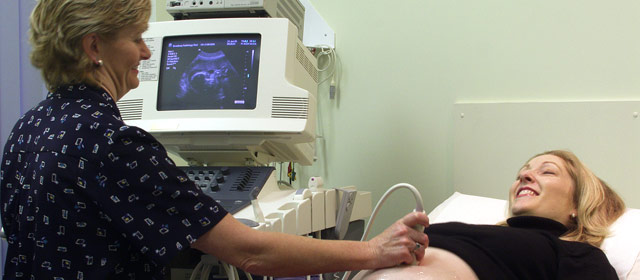Story summary
Pregnancy and care
Māori women traditionally gave birth in specially constructed shelters that were burnt with all their contents after the birth. The whenua (placenta) and umbilical cord were carefully buried on land with tribal connections with one of the parents. Birthing mothers were assisted by other women and a special ceremony was performed soon after birth by a tohunga (religious leader) who sprinkled water on the baby.
In the 19th century, Pākehā settler women wore loose clothing or corsets to hide the bulge of their pregnant bodies. They relied on midwives, family members or neighbours to assist them and delivered the baby in their own home or the home of one of those who was assisting at the birth.
Until the 20th century pregnancy was the inevitable result of most heterosexual relationships. Most mothers were married, and single women who became pregnant experienced disapproval and often financial hardship.
Many women feared childbirth because they or the baby might die. Until the 1970s men were usually not present at the birth of their children and had little to do with babies.
Gradually medical science made birth less risky. Women and babies were checked during pregnancy, midwives and maternity nurses received more formal training, and often doctors attended the birth. By the 21st century the first pictures of a baby were often ultrasound images showing the baby’s development in the womb.
Antenatal (before birth) classes taught women about childbirth and how to care for their babies.
Hospitals and birth
From 1904 the government opened maternity hospitals and trained and registered midwives. But women continued to die from infections following childbirth. As more women gave birth in hospitals and hygiene improved, greater numbers survived. In 1939, 78% of all New Zealand women but only 17% of Māori women gave birth in hospital attended by a doctor. This changed after the Second World War – in 1947, 50% of Māori women gave birth in hospital.
Hospital rules were strict. Women were expected to give birth while lying on their backs with their feet in stirrups. The number of Caesarean sections – delivering the baby through a cut in the mother’s abdomen – increased. Women were often given strong drugs for pain relief. Fathers were not allowed to attend the birth.
Childbirth, 1950s to 21st century
In 1952 Parents Centre was founded. Its members felt that women should have more control over childbirth. The Home Birth Association wanted women to give birth at home. Midwives wanted to be able to deliver babies without a doctor present.
Hospital rules became more relaxed. By the 1970s husbands were allowed to attend the birth of their children, and later boyfriends or de facto partners could do so.
Smaller maternity hospitals were closed between the 1970s and 1990s, and women gave birth in large general hospitals.
Midwives began to dominate maternity care, and many family doctors no longer attended births. Most women (including Māori women) continued to give birth in hospital, but many mothers went home with their babies within 24 hours of giving birth. In 2014, 25.9% of babies were born by Caesarean section.
Birth rates
In the 19th century birth rates were high. In 1878 the average married woman had nine babies. The birth rate then fell, and by the 1930s many women had only two babies. More people used contraception, and from the 1960s women could take the birth control pill.
After the Second World War women married young and there was a ‘baby boom’ which lasted till the 1970s. Pākehā women had on average 3.8 live births in the mid-1950s and Māori women an average of almost seven.
In the early 21st century women began to have their first babies when they were older, and the number of twins increased.
Baby care
In 1907 the Plunket Society was founded to help mothers and babies. Until the 1930s many families paid a nurse or midwife to stay with them after the birth and look after the mother and baby, and any older children.
Until the 1970s women stayed in hospital for up to two weeks after giving birth. They were taught how to breastfeed and bathe babies. The babies were kept in a nursery away from their mothers. By the 1980s women left hospital earlier if they wanted to. Some women were encouraged to go home the day after the birth.
Plunket nurses encouraged women to breastfeed their babies. But the number of bottle-fed babies increased, and by the 1960s only half of mothers breastfed. At first mothers were encouraged to use watered-down cow’s milk in bottles, but in the 21st century infant formula was recommended.
Welcoming the new baby
The birth of a baby was usually announced in the newspaper. Birth was often celebrated by a ritual. Babies were baptised in a church, or their parents held a naming ceremony.





